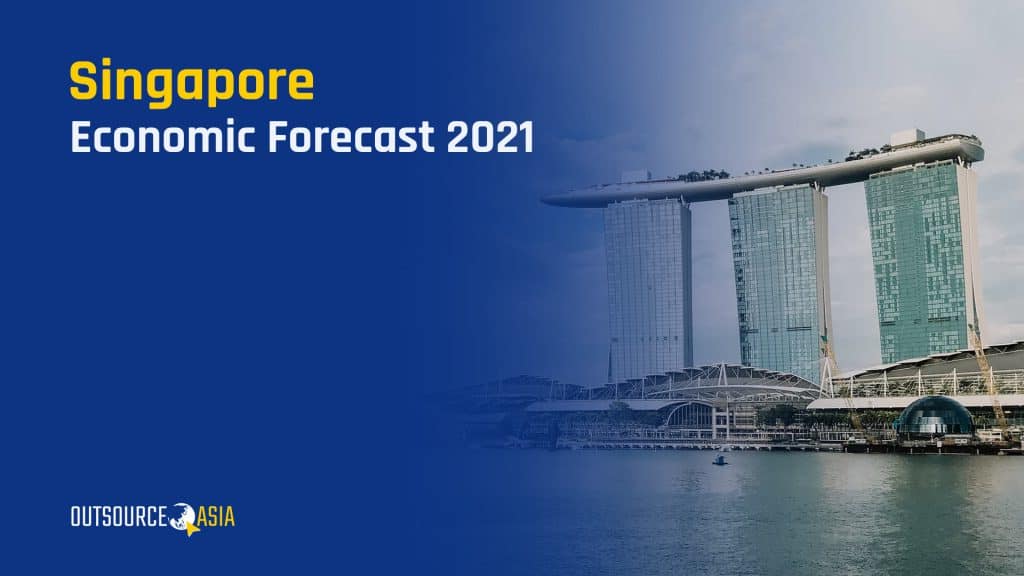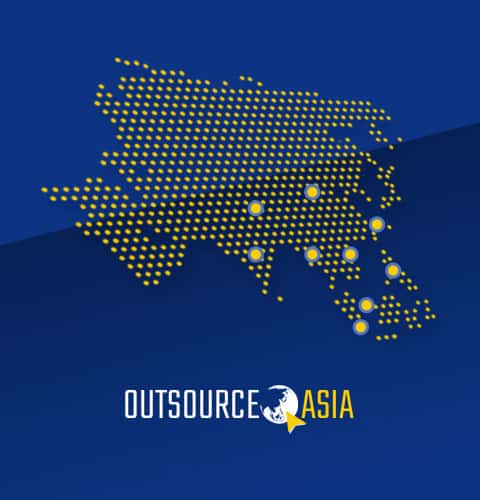
Singapore Economic Forecast 2021
The Singapore Economic Forecast 2021 summarizes key economic and social developments over the past year. It also presents findings on the evolution of policy reforms, external/global conditions, and financial-market dynamics from world-recognized financial institutions and multinational professional services authorities, assessing their implications for the country’s medium-term economic outlook.
Singapore’s economy is highly dependent on international trade and public spending; with trade war between the US and China as well as the COVID-19 pandemic, it registered a -5.4% GDP growth in 2020. Gross debt is at 128.4% of GDP in 2020 and is expected to go slightly higher to 129.5% in 2021 and 130.7% in 2022. However, International Monetary Fund (IMF) said that its post-pandemic global economic recovery is underway and can be attributed to a long-standing business-friendly regulatory system, an acceptable inflation rate, and a higher per capita wealth than most countries in the region. Economic challenges include sustained trade slowdown in China, decreasing export demands for electronics, unemployment in the construction sector, a lagging outsourcing industry, and a tight monetary policy.
Singapore economy, according to Ministry of Trade and Industry (MTI), would maintain its projected growth forecast at a range of 4.0-6.0%. Despite heightened uncertainties arising from the COVID-19 pandemic, this has been the highest growth rate in more than a year since Q4 2019 that can be attributed to a resilient manufacturing sector.
Manufacturing, the country’s largest industry that contributes up to 25% of the annual GDP, expanded by 10.7% from a year ago – a 0.4% higher than predicted supported by significant output in the precision engineering, chemicals, and electronics clusters.
Construction was weighed down by declines in both public and private sector projects, resulting to a 22.7% contraction last year; National Development Minister Desmond Lee expects between $23 billion and $28 billion growth that will be coming from demands for healthcare, transport, and public housing infrastructure.
Wholesale trade achieved 3.5% year-on-year expansion that can be attributed to robust sales performance in the supplies, equipment, and machinery segment.
Retail trade has a steep 6.1% fall and is expected to stay subdued due to loss of income from food and alcohol, toiletries, and cosmetics. This larger decline, however, is attributed to higher sales recorded when Chinese New Year was celebrated, according to the Department of Statistics (Singstat) and does not include sales from motor vehicles.
Transportation and storage, once considered the country’s top-performing industry, experiences a continued weakness with a 16.5% contraction due to ongoing international and domestic travel restrictions, more companies implement a variety of work-from-home arrangements for employees, and decline in total land transport and sea cargo revenues.
The rocky road to recovery of the accommodation sector continues as international visitor arrivals plummeted 85.7% which translates to more than 78% revenue loss. Singapore Tourism Board (STB), however, remains positive that when imposed border closures are fully lifted, tourism-related businesses will return to pre-COVID-19 performance levels by 2024.
All segments within the food and beverage services sector have been badly affected, contributing to a 9.4% contraction on a year-on-year basis. This has been caused by restrictions on large-scale events and gatherings, capacity constraints on restaurants, and continued slump in visitor arrivals.
Strong performance by the IT and information services contributed to a 6.4% growth acceleration on the information and communications sector. Consumer demand for digital solutions, software and applications, and learning management systems are integral to bring an expected $924 billion income in 2021.
Finance and insurance grew by 4.9% last year, mainly supported by active activities in credit intermediation, insurance, and fund management. Total assets and liabilities of commercial banks, finance companies, and merchant banks contributed $1.5 trillion, $18 trillion, and $105 trillion, respectively; total Central Provident Fund (CPF) balances reached $462 billion while total turnover value of the securities market skyrocketed to $358 billion.
Real estate worsened significantly with an 11% decline from a year ago due to weak rental performances in commercial, industrial, and office space segments.
The professional services as well as the administrative and support sector accounts for more than 10% of the overall economy’s nominal value-added (VA), and provides a wide variety of services for essential business operations including accounting, architecture and engineering, advertising, and business and management consultancy. Its sharp 9.7% contraction last year is a result of decline in construction contracts, market research demands, and business-related cutbacks.
Global Recovery On Track
The economy of the island state is on the mend from the COVID-19 crisis. This hinges on a few crucial factors such as expansionary fiscal and monetary policies in regional markets, a less toxic US-China relationship, and the rapid deployment of vaccines. Against this backdrop, performances from key economic industries will give way to hope and optimism of a stronger rebound for the Q3 2021.
First, robust demand from the automotive market which can contribute to $1.7 million revenue in 2021, and 5G markets which can lead to $700 million revenue by 2025 will lead to a stronger expansion in the manufacturing sector. Significant growth potential is also expected from cloud-based activities due to adoption of digital solutions among local businesses. As domestic and foreign demand increases, this could benefit the wholesale trade or trade-related services sectors.
Second, there would be further delay in the recovery of the tourism- and aviation-related sectors amidst rising infections in other countries and uncertainties brought by more lethal variants of the virus. Operating capacity limits in air transport and accommodations as well as entertainment, arts, and recreation will likely result to at least three to five years’ worth of waiting before losses can be recouped, according to Singapore Tourism Board’s (STB).
Third, consumer-facing sectors such as food and beverage as well as retail trade will still be heavily affected due to continued implementation of health protocols and a more subdued tourism outlook. However, online sales on household furniture, recreational goods, and telecommunications equipment, can offset the conservative sales growth in this industry. With the rise of telecommuting, remote work, and use of e-payment, e-invoicing, and other digital tools for operating in the new normal, e-commerce businesses can thrive and can potentially create $2.7 million income in 2021.
Fourth, the construction and marine & offshore engineering sectors will still have substantially low output by year-end due to manpower shortages and foreign workforce restrictions.
Fifth, it is noteworthy to remark that Singapore still intends to remain as an uncontestable tech hub in the region by allotting $2.5 billion worth of ICT investment which is focused on development, implementation, and modernization of cloud-based systems and digital services. This is to support government agencies and private organizations using AI, data analytics, and sensor technologies which could lead to a $2.8 billion projected market revenue in 2021.
About Outsource Asia
Outsource Asia is committed to providing industry and technology expertise, solutions, frameworks and tools to businesses looking to explore, build, and manage outsourced teams. Its seasoned outsourcing professionals connects organizations of all sizes and types to top-notch outsourced suppliers and service providers in the Philippines and around the world.
What services do you want to outsource? Schedule for FREE CONSULTATION today.


